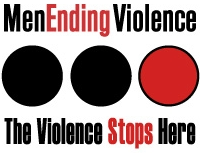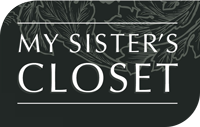Will the Hockey Canada Case Have a Chilling Effect on Victims of Sexual Assault in Canada?
The answer is yes. And it’s already happening.
On July 25, 2025, five former junior hockey players—each previously signed to an NHL team—were acquitted in a high-profile sexual assault case stemming from an alleged group assault in 2018. The complainant, known publicly as E.M., testified for eight days, enduring intense scrutiny, character attacks, and invasive cross-examination. In the end, the judge ruled that her testimony was not credible or reliable.
While the legal process has concluded, its implications are only beginning. For sexual assault survivors across Canada, the outcome of this trial does more than close a file. It sends a warning. One that will reverberate through every hospital exam room, every university orientation, every crisis line, every sexual assault centre, every transition house, every therapist’s office, and every moment when someone harmed by sexual violence asks:
Should I report?
This case will deter many from doing so. Not because they don’t seek justice—but because they’ve now seen how justice is defined.
A Chilling Effect Is Not Hypothetical
Sexual violence is already among the most underreported crimes in Canada. According to Statistics Canada, only about 6% of sexual assaults are reported to police. Of those, less than half lead to charges, and fewer still result in a conviction. Now imagine watching this trial unfold as a survivor:
- The invasive dissection of E.M.’s memory.
- The weaponization of her texts, silences, and coping strategies.
- The complete absence of accountability for the accused, four of whom never testified.
- The courtroom became a stage where only one person was required to perform—while her harm was put on trial.
Survivors are being shown what “justice” requires of them: coherence, composure, perfect memory, and a version of victimhood that aligns with outdated myths. Many will reasonably conclude: I cannot survive that.
This isn’t a chilling effect in the abstract. It’s a signal to survivors that coming forward will likely not result in safety—but could cost them their dignity, privacy, and well-being.
What the Courtroom Can’t Hold
The criminal legal system in Canada was not designed with survivors in mind. As lawyer Gillian Hnatiw has said, it is a “blunt instrument”—one that demands performance from survivors, while offering silence and insulation to those accused.
The system:
- Does not ask, What happened to you?
- It asks, Can you survive what we’re about to do to you?
This is especially true in cases involving powerful or high-profile defendants. In those moments, the system doesn’t merely question the survivor. It protects the brand, the league, the national myth. It defends the reputation of those seen as valuable. That defense comes at the cost of survivors’ credibility, safety, and future.
The courtroom did not ask what E.M. endured. It asked whether her responses fit a script.
A script in which trauma must be linear. Reactions must be immediate. Memory must be flawless.
There is no space for contradiction, for confusion, for the ways people survive.
The law didn’t fail to see the harm. It failed to recognize it on any terms but its own.
E.M. wasn’t disbelieved because her story lacked truth.
She was disbelieved because the system requires victims to be consistent, coherent, and composed—while demanding those things in the aftermath of violence.
False Accusations Are a Red Herring
One of the most enduring counter-narratives after any high-profile acquittal is the assertion that women routinely make false accusations. That fear is now likely to be reignited.
But here’s the truth:
False reports of sexual assault are rare.
Research from jurisdictions around the world, including Canada, estimates the rate of false reporting to be between 2–8%—comparable to other crimes like robbery or assault.
What is far more common?
- Survivors who never report.
- Survivors who recant under pressure.
- Survivors who are disbelieved or blamed when they do come forward.
- Survivors who are retraumatized by the very systems they turn to for justice.
The myth of false accusations does not protect the innocent. It protects the status quo. And it gives perpetrators a ready-made narrative to discredit anyone who dares name them.
So What Now?
We must be honest: this case will have a chilling effect. Not because survivors are weak. But because they are wise. They have learned from what the courtroom can’t hold.
But the criminal system is not the only form of justice. As Hnatiw reminds us, survivors can—and do—pursue healing, validation, and accountability outside the courtroom. Through civil claims. Through institutional complaints. Through collective organizing. Through telling the truth anyway.
And as advocates, legal workers, educators, and community members, our job is to hold space for that truth, to refuse the silence, tell survivors: you are not alone, and the court’s disbelief does not erase what happened.
An acquittal in this case does not prove that the criminal law is incapable of responding to sexual violence. But even before the verdict, some voices were already pivoting—suggesting that this case illustrates the need for alternative, non-criminal approaches like “restorative justice.”
That response misses the point. It assumes, wrongly, that restorative models are somehow immune from the same gendered biases that plague the courts. It also assumes that survivors want dialogue, or reconciliation, with those who violated them.
We reject the idea that justice for women must mean less justice—softer processes, fewer rights, or lowered expectations. Whatever the outcome of this trial, women are entitled to a criminal legal system that respects both the right to equality and the right to a fair trial.
And to E.M.—we see your courage. We know what it cost. And we will not forget.




